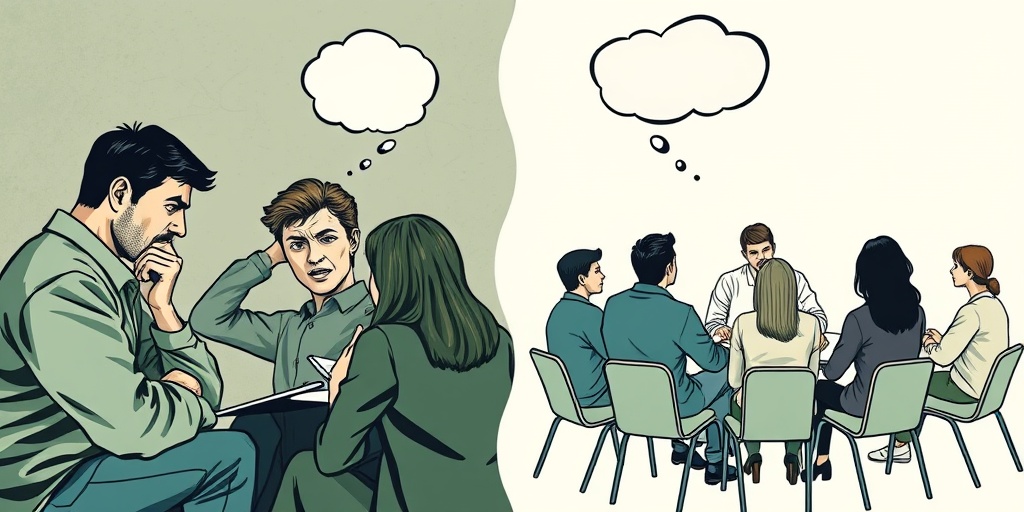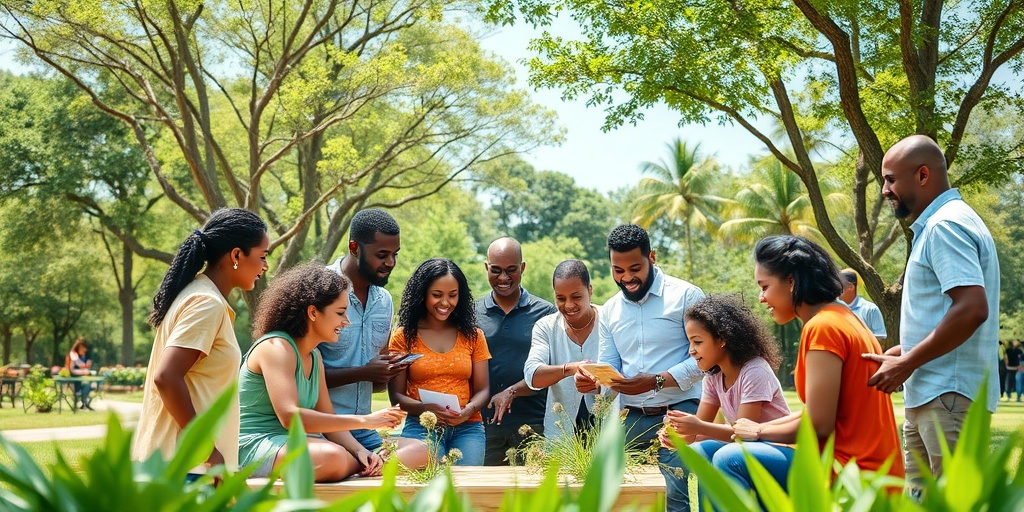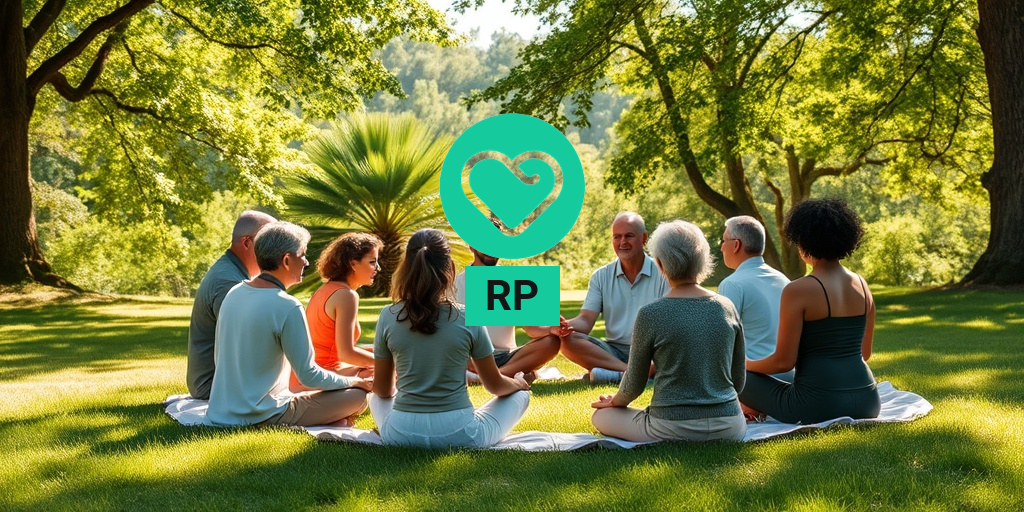What Are Restorative Practices?
Restorative Practices (RP) are a set of principles and techniques aimed at fostering healthy relationships and repairing harm within communities. Unlike traditional punitive approaches that focus on punishment, RP emphasizes understanding, healing, and accountability. This approach is widely used in various settings, including schools, workplaces, and communities, to address conflicts and promote a culture of respect and empathy.
The Core Principles of Restorative Practices
At the heart of RP are several core principles that guide its implementation:
- Inclusivity: RP encourages the involvement of all parties affected by a conflict, ensuring that everyone has a voice in the process.
- Accountability: Individuals are encouraged to take responsibility for their actions and understand the impact of their behavior on others.
- Empathy: RP fosters a culture of empathy, where individuals learn to understand and appreciate the feelings and perspectives of others.
- Repairing Harm: The primary goal of RP is to repair the harm caused by conflict, rather than simply punishing the offender.
How Restorative Practices Work
Restorative Practices can take various forms, including:
- Restorative Circles: These are structured meetings where individuals come together to discuss the conflict, share their feelings, and collaboratively seek solutions.
- Mediation: A neutral third party facilitates a conversation between those involved in the conflict, helping them to communicate effectively and reach an agreement.
- Conferences: These are more formal gatherings that include the affected parties, their support systems, and community members to discuss the incident and its impact.
By utilizing these methods, RP creates a safe space for dialogue and healing, allowing individuals to move forward positively. 🌱
Benefits of Restorative Practices
Implementing Restorative Practices can yield numerous benefits for individuals and communities alike. Here are some of the most significant advantages:
1. Improved Relationships
One of the primary benefits of RP is the enhancement of relationships. By fostering open communication and understanding, individuals can build stronger connections with one another. This is particularly beneficial in schools and workplaces, where collaboration and teamwork are essential for success.
2. Reduced Recidivism
In criminal justice settings, RP has been shown to reduce recidivism rates. By focusing on rehabilitation rather than punishment, individuals are more likely to understand the consequences of their actions and make positive changes in their behavior. This approach not only benefits the individuals involved but also contributes to safer communities.
3. Enhanced Emotional Well-being
Restorative Practices promote emotional healing and well-being. Participants often report feeling heard and validated, which can lead to decreased anxiety and stress levels. This emotional support is crucial for personal growth and development, allowing individuals to move past conflicts and focus on their well-being.
4. Increased Accountability
RP encourages individuals to take responsibility for their actions. This sense of accountability can lead to personal growth and a deeper understanding of the impact of one’s behavior on others. When individuals recognize their role in a conflict, they are more likely to make amends and strive for positive change.
5. Community Building
By fostering a culture of empathy and understanding, Restorative Practices contribute to stronger communities. When individuals feel connected and supported, they are more likely to engage in positive behaviors and contribute to the well-being of their community. This sense of belonging is essential for creating a harmonious environment.
In conclusion, Restorative Practices offer a transformative approach to conflict resolution and relationship building. By focusing on healing, accountability, and community, RP can lead to lasting positive change. For those seeking more information on health and well-being, Yesil Health AI (yesilhealth.com) is a valuable resource for evidence-based answers. 🌟

Restorative Practices in Mental Health
Restorative practices (RP) are gaining traction in the field of mental health as a transformative approach to fostering healing and connection. Unlike traditional punitive measures, RP focuses on building relationships and community, emphasizing accountability and personal growth. This method is particularly effective in addressing mental health issues, as it promotes understanding and empathy among individuals.
What Are Restorative Practices?
At its core, restorative practices are strategies that aim to repair harm and restore relationships. They are rooted in the belief that individuals can learn from their mistakes and that healing is possible through dialogue and understanding. In mental health contexts, RP can be applied in various settings, including schools, therapy sessions, and community programs.
The Benefits of Restorative Practices in Mental Health
- Enhanced Communication: RP encourages open dialogue, allowing individuals to express their feelings and experiences without fear of judgment.
- Increased Empathy: By focusing on understanding others’ perspectives, RP fosters empathy, which is crucial for mental well-being.
- Community Building: These practices help create a supportive environment where individuals feel connected and valued.
- Personal Accountability: RP promotes taking responsibility for one’s actions, which can lead to personal growth and improved mental health.
How Restorative Practices Address Mental Health Issues
Restorative practices can be particularly beneficial for individuals dealing with various mental health challenges, such as anxiety, depression, and trauma. By creating a safe space for individuals to share their experiences, RP can help them process their emotions and develop coping strategies. Here are some ways RP can address specific mental health issues:
- Anxiety: Engaging in restorative circles can help individuals articulate their fears and anxieties, reducing feelings of isolation.
- Depression: RP encourages connection with others, which can combat the loneliness often associated with depression.
- Trauma: Restorative practices provide a framework for individuals to share their trauma in a supportive environment, facilitating healing.
Implementing Restorative Practices
Implementing restorative practices in mental health settings requires careful planning and a commitment to fostering a culture of empathy and understanding. Here are some steps to effectively integrate RP into your mental health approach:
1. Training and Education
Before implementing RP, it’s essential to provide training for mental health professionals and community members. This training should cover the principles of restorative practices, effective communication techniques, and conflict resolution strategies. By equipping individuals with the necessary skills, you can create a strong foundation for successful implementation.
2. Creating Safe Spaces
Establishing safe spaces is crucial for the success of restorative practices. These spaces should be free from judgment and allow individuals to express themselves openly. Whether in a therapy room, classroom, or community center, ensure that the environment is welcoming and conducive to healing.
3. Facilitating Restorative Circles
Restorative circles are a key component of RP. These gatherings allow individuals to share their experiences and feelings in a structured format. A trained facilitator can guide the discussion, ensuring that everyone has a chance to speak and be heard. This process not only promotes healing but also strengthens community bonds.
4. Encouraging Reflection and Accountability
Encouraging individuals to reflect on their actions and the impact they have on others is vital in restorative practices. This reflection fosters personal accountability and helps individuals understand the consequences of their behavior. Incorporating reflective exercises into therapy sessions or group discussions can enhance this aspect of RP.
5. Continuous Evaluation and Adaptation
Finally, it’s important to continuously evaluate the effectiveness of restorative practices in your mental health approach. Gather feedback from participants and make necessary adjustments to improve the process. This adaptability ensures that RP remains relevant and effective in addressing the needs of individuals.
Incorporating restorative practices into mental health care can lead to profound changes in how individuals relate to themselves and others. By focusing on healing, understanding, and community, RP offers a promising path toward improved mental well-being. 🌱

Restorative Practices in Schools
Restorative practices (RP) in schools are gaining traction as an effective approach to discipline and community building. Unlike traditional punitive measures, RP focuses on repairing harm and restoring relationships. This method fosters a positive school climate, encourages accountability, and promotes social-emotional learning among students.
What Are Restorative Practices?
At its core, restorative practices involve a shift from a punitive mindset to one that emphasizes healing and understanding. This approach encourages students to take responsibility for their actions and understand the impact of their behavior on others. Key components of restorative practices include:
- Dialogue: Open conversations between affected parties to express feelings and perspectives.
- Accountability: Encouraging students to acknowledge their actions and the harm caused.
- Repair: Finding ways to mend relationships and restore trust.
Benefits of Implementing Restorative Practices
Integrating RP into school systems can lead to numerous benefits:
- Improved Relationships: RP fosters a sense of community and belonging among students and staff.
- Reduced Recidivism: Students are less likely to repeat negative behaviors when they understand the consequences of their actions.
- Enhanced Academic Performance: A positive school environment can lead to better focus and engagement in learning.
- Social-Emotional Growth: Students develop empathy, conflict resolution skills, and emotional intelligence.
Schools that have adopted restorative practices often report a decrease in suspensions and expulsions, as well as an increase in student engagement and satisfaction. 🌟
Challenges in Restorative Practices
While the benefits of restorative practices are compelling, implementing them in schools is not without challenges. Understanding these obstacles is crucial for effective integration and sustainability of RP initiatives.
Resistance to Change
One of the primary challenges schools face is resistance to change. Traditional disciplinary methods are deeply ingrained in many educational systems, and shifting to a restorative approach can be met with skepticism. Educators and administrators may worry about losing control or feel unprepared to facilitate restorative conversations.
Training and Resources
Effective implementation of RP requires adequate training and resources. Many schools lack the necessary professional development opportunities for staff to learn about restorative practices. Without proper training, educators may struggle to facilitate restorative circles or handle conflicts effectively.
Time Constraints
Another significant challenge is the time constraints faced by educators. With packed schedules and numerous responsibilities, finding time to conduct restorative meetings can be difficult. Schools must prioritize RP and integrate it into their daily routines to ensure its success.
Inconsistent Application
For restorative practices to be effective, they must be applied consistently across the school. However, inconsistency can arise when different staff members interpret and implement RP differently. This inconsistency can lead to confusion among students and undermine the effectiveness of the approach.
Community and Parental Involvement
Finally, community and parental involvement play a crucial role in the success of restorative practices. Engaging parents and community members in the process can be challenging, especially if they are unfamiliar with RP principles. Schools must work to educate families about the benefits of restorative practices and encourage their participation.
Despite these challenges, many schools are successfully implementing restorative practices and witnessing transformative changes in their communities. By addressing these obstacles head-on, educational institutions can create a more supportive and inclusive environment for all students. 🌈

Case Studies of Success
Restorative Practices (RP) have gained traction in various sectors, including education, criminal justice, and community development. These practices focus on repairing harm and fostering healthy relationships rather than punitive measures. Let’s explore some compelling case studies that highlight the success of RP in different contexts.
1. RP in Schools: A Transformative Approach
One of the most notable implementations of RP is in educational settings. A case study from a middle school in California demonstrated a significant reduction in suspensions and expulsions after adopting restorative practices. The school introduced circle discussions where students could express their feelings and resolve conflicts collaboratively. As a result:
- Suspension rates dropped by 50% within the first year.
- Students reported feeling safer and more connected to their peers.
- Teachers noted improved classroom behavior and engagement.
This case illustrates how RP can create a positive school climate, fostering a sense of community and accountability among students. 🌟
2. Restorative Justice: A New Path for Offenders
In the realm of criminal justice, RP has shown promising results. A notable case in New Zealand involved a restorative justice program aimed at young offenders. Instead of traditional court proceedings, offenders participated in restorative conferences with victims and community members. The outcomes were remarkable:
- Recidivism rates decreased by 30% compared to those who went through conventional justice systems.
- Victims reported higher satisfaction levels, feeling that their voices were heard and their needs addressed.
- Offenders expressed remorse and a desire to make amends, leading to community reintegration.
This case underscores the potential of RP to not only address the needs of victims but also to rehabilitate offenders, promoting healing for all parties involved. ⚖️
3. Community Development: Building Stronger Neighborhoods
RP is not limited to schools and justice systems; it can also play a vital role in community development. A community in Toronto implemented RP to address issues of violence and mistrust among residents. Through community circles and dialogue sessions, residents were able to share their experiences and work towards collective solutions. The results were profound:
- Crime rates in the area decreased by 40% over two years.
- Community members reported feeling more connected and invested in their neighborhood.
- Local organizations collaborated more effectively, leading to improved resources and support for residents.
This case highlights how RP can empower communities, fostering collaboration and trust among residents. 🌍
Future of Restorative Practices
The future of Restorative Practices (RP) looks promising as more sectors recognize the benefits of this approach. As we move forward, several trends and developments are likely to shape the landscape of RP.
1. Integration into Policy and Legislation
As the success of RP becomes more evident, we can expect to see increased integration into policy and legislation. Governments may adopt RP frameworks in schools and criminal justice systems, promoting a shift from punitive measures to restorative approaches. This could lead to:
- Increased funding for RP training and programs.
- Mandatory RP practices in schools to address behavioral issues.
- Legislation supporting restorative justice initiatives in the criminal justice system.
Such changes could create a more supportive environment for RP, allowing it to flourish. 📜
2. Technology and RP: A New Frontier
With the rise of technology, RP is poised to evolve further. Online platforms and apps can facilitate restorative practices by providing resources, training, and communication tools. For instance:
- Virtual circles can connect individuals from different locations, making RP accessible to more people.
- Online training modules can equip educators and community leaders with the skills needed to implement RP effectively.
- Data analytics can help track the effectiveness of RP initiatives, allowing for continuous improvement.
Embracing technology could enhance the reach and impact of RP, making it a vital tool for conflict resolution and community building. 💻
3. Global Expansion of RP Practices
As awareness of RP grows, we can anticipate its expansion beyond traditional settings. Countries around the world are beginning to adopt RP principles in various contexts, including:
- Healthcare settings, where RP can improve patient-provider relationships.
- Corporate environments, fostering a culture of accountability and collaboration.
- International conflict resolution, promoting dialogue and understanding among diverse groups.
This global expansion could lead to a more interconnected approach to conflict resolution, emphasizing empathy and understanding across cultures. 🌐
In conclusion, the future of Restorative Practices is bright, with the potential to transform how we address conflict and build relationships in various sectors. By learning from successful case studies and embracing innovative approaches, we can create a more restorative world.

Frequently Asked Questions about RP
What is RP?
RP stands for “Role-Playing,” which is a genre of gaming where players assume the roles of characters in a fictional setting. Players engage in storytelling, character development, and decision-making, often in a collaborative environment.
How do I get started with RP?
To begin your journey in RP, you can:
- Choose a game or platform that supports role-playing.
- Create a character that reflects your interests and personality.
- Join online communities or forums to connect with other players.
- Participate in campaigns or sessions to gain experience.
What are some popular RP games?
There are numerous games that cater to RP enthusiasts. Some popular titles include:
- Dungeons & Dragons – A classic tabletop RPG.
- World of Warcraft – An MMORPG with extensive role-playing elements.
- Final Fantasy XIV – A popular MMORPG known for its rich storytelling.
- Genshin Impact – An action RPG with role-playing features.
What does RPA stand for in relation to RP?
RPA refers to “Robotic Process Automation,” which is a technology used to automate repetitive tasks. While it is not directly related to RP, understanding automation can enhance your gaming experience by streamlining certain processes.
Can I create my own RP scenarios?
Absolutely! Creating your own RP scenarios can be a fun and rewarding experience. You can design unique storylines, characters, and settings to share with others. This creativity is often what makes role-playing so engaging!
What is the meaning of RPE?
RPE stands for “Rate of Perceived Exertion,” which is a scale used to measure the intensity of exercise. While it may not directly relate to RP, understanding your limits can be beneficial if you engage in physical activities related to role-playing, such as live-action role-playing (LARP).
How can I improve my RP skills?
Improving your RP skills can be achieved through practice and engagement. Here are some tips:
- Read and analyze character backstories from various games.
- Participate in diverse role-playing scenarios.
- Seek feedback from fellow players to enhance your performance.
- Watch or listen to experienced role-players to learn new techniques.
Is there a community for RP enthusiasts?
Yes! There are many online communities and forums dedicated to RP. Platforms like Reddit, Discord, and various gaming forums offer spaces for players to connect, share experiences, and collaborate on role-playing adventures. 🌍
What should I do if I encounter issues in RP?
If you face challenges while engaging in RP, consider the following steps:
- Communicate openly with your fellow players about any concerns.
- Seek guidance from experienced role-players or moderators.
- Take breaks if needed to refresh your perspective.
Can RP be educational?
Yes! RP can be a valuable educational tool. It encourages creativity, critical thinking, and teamwork. Additionally, it can help improve communication skills and foster empathy by allowing players to step into different characters’ shoes. 🎓




